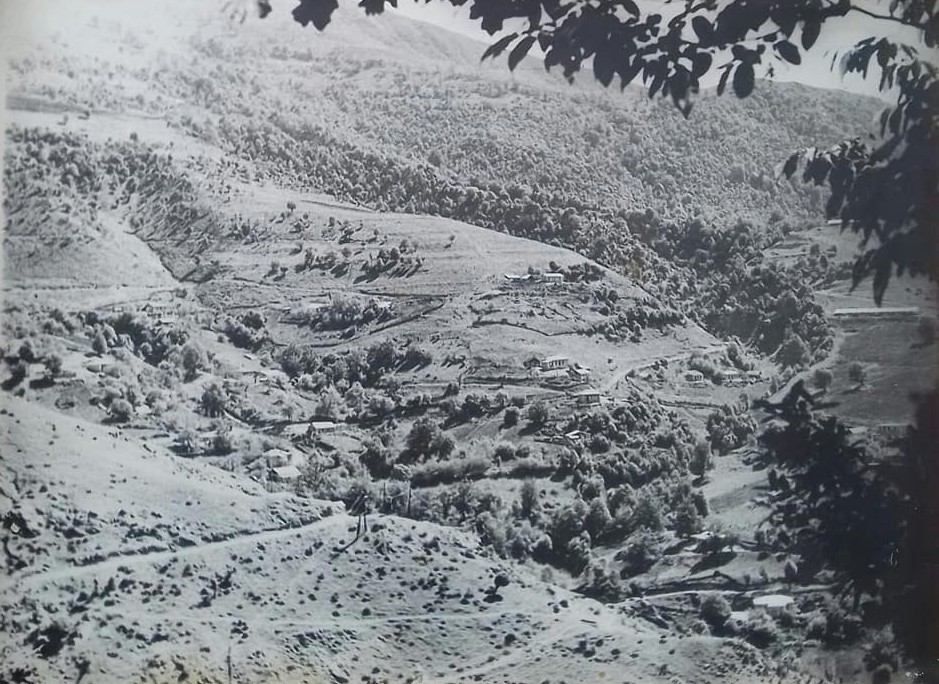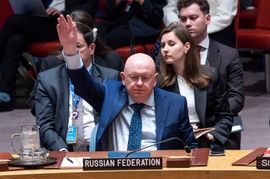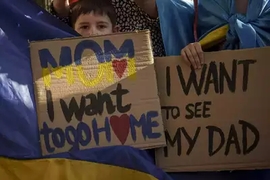On the night of April 7 to 8, 1992, a peaceful Azerbaijani village, Aghdaban, located in the Kalbajar district, became the scene of a harrowing tragedy that resulted in the loss of 67 lives, including 8 elderly, 2 young children, and 7 women who were horrifically burned alive. Simultaneously, 779 victims suffered from brutal tortures.
This year marks the 32nd anniversary of the bloody events in Aghdaban that led to the complete obliteration of the village, with all 130 of its homes razed to the ground.
The atrocity saw extreme cruelty of the tortures inflicted by Armenian soldiers, where victims were mutilated and, upon dying from the unbearable torment, their bodies were subjected to mockery. The massacre in Aghdaban occurred roughly a year before the occupation of the Kalbajar district, with the capture of the village setting ground for the occupation of the entire region.
The attack on Aghdaban was reportedly ordered by Robert Kocharyan, a former field commander of the Armenian separatists who later became the second president of Armenia. This military crime also destroyed a substantial part of Azerbaijani cultural heritage. The invaders burned manuscripts of the prominent Azerbaijani classical poet, Ashug Gurban of Aghdaban and his son, Ashug Shamshir, and barbarically destroyed monuments of history, architecture, and culture, desecrating sacred places of worship.
The Aghdaban tragedy became another evidence of Armenia’s long-standing policy of ethnic cleansing and genocide against Azerbaijanis over nearly two centuries. During the First Karabakh War in 1991-1994, Armenian nationalists similarly targeted and tortured defenseless Azerbaijanis in various other locations.
Nowadays, the discovery of dozens of mass graves of Azerbaijani victims in territories liberated from Armenian occupation in 2020 serves as a solid testament to the acts of genocide and military crimes committed by Armenian forces during the First Karabakh War.
Armenia and Azerbaijan had been in an armed conflict for nearly 30 years over the Karabakh (Garabagh) region, an internationally recognized territory of Azerbaijan. Armenia launched full-blown military aggression against Azerbaijan following the Soviet Union’s dissolution in 1991. The bloody war lasted until a ceasefire in 1994 and saw Armenia occupying 20 percent of Azerbaijan’s internationally recognized territories. Over 30,000 Azerbaijanis were killed, nearly 4,000 went missing, and one million were expelled from those lands in a brutal ethnic cleansing campaign conducted by Armenia.
On September 27, 2020, the decades-old conflict took a violent turn after Armenia’s forces deployed in the occupied Azerbaijani lands shelled military positions and civilian settlements of Azerbaijan. During the counter-attack operations that lasted 44 days, Azerbaijani forces liberated over 300 settlements, including the cities of Jabrayil, Fuzuli, Zangilan, Gubadli, and Shusha, from nearly 30-year-long illegal Armenian occupation. The war ended in a tripartite statement signed on November 10, 2020, by Armenia, Azerbaijan, and Russia. Under the statement, Armenia also returned the occupied Aghdam, Kalbajar, and Lachin districts to Azerbaijan.
According to data compiled by the Azerbaijani government, 3,890 Azerbaijani citizens, including 71 children, 267 women, and 326 elderly people went missing during the First Karabakh War. Baku has been demanding that Armenia assist in investigating the fate of those people, a request that remains unfulfilled.
Post-war searches in the liberated territories unearthed the remains of 12 civilians in the Kalbajar district, where the Bashlibel mass murder was committed by the Armenian armed forces in 1993. Multiple mass and individual graves of Azerbaijanis have been discovered in Khojaly, Khojavand, Kalbajar, Aghdam, and Fuzuli regions, as well as around the city of Shusha.
Since 2020, at least 500 human remains have been unearthed in such graves in the villages of Bashlibel in Kalbajar, Edilli in Khojavand, Farrukh in Khojaly, Sarijali in Aghdam, Seyidahmadli in Fuzuli region, as well as in the vicinity of the Shusha prison and other settlements.
Historians and analysts in Baku believe that more mass graves of Azerbaijanis killed by Armenian forces could be found in multiple locations in the liberated territories.







 Iranian President Ebrahim Raisi expressed Tehran’s readiness to participate in significant development projects in Sri Lanka during the inauguratio...
Iranian President Ebrahim Raisi expressed Tehran’s readiness to participate in significant development projects in Sri Lanka during the inauguratio...
 As the conflict between Ukraine and Russia escalates, the strategic importance of Kharkiv, Ukraine's second-largest city, has come sharply into focus.
As the conflict between Ukraine and Russia escalates, the strategic importance of Kharkiv, Ukraine's second-largest city, has come sharply into focus.
 Iran and Pakistan have signed eight cooperation documents in various fields, and agreed to strengthen ties to fight terrorism in the region.
Iran and Pakistan have signed eight cooperation documents in various fields, and agreed to strengthen ties to fight terrorism in the region.



